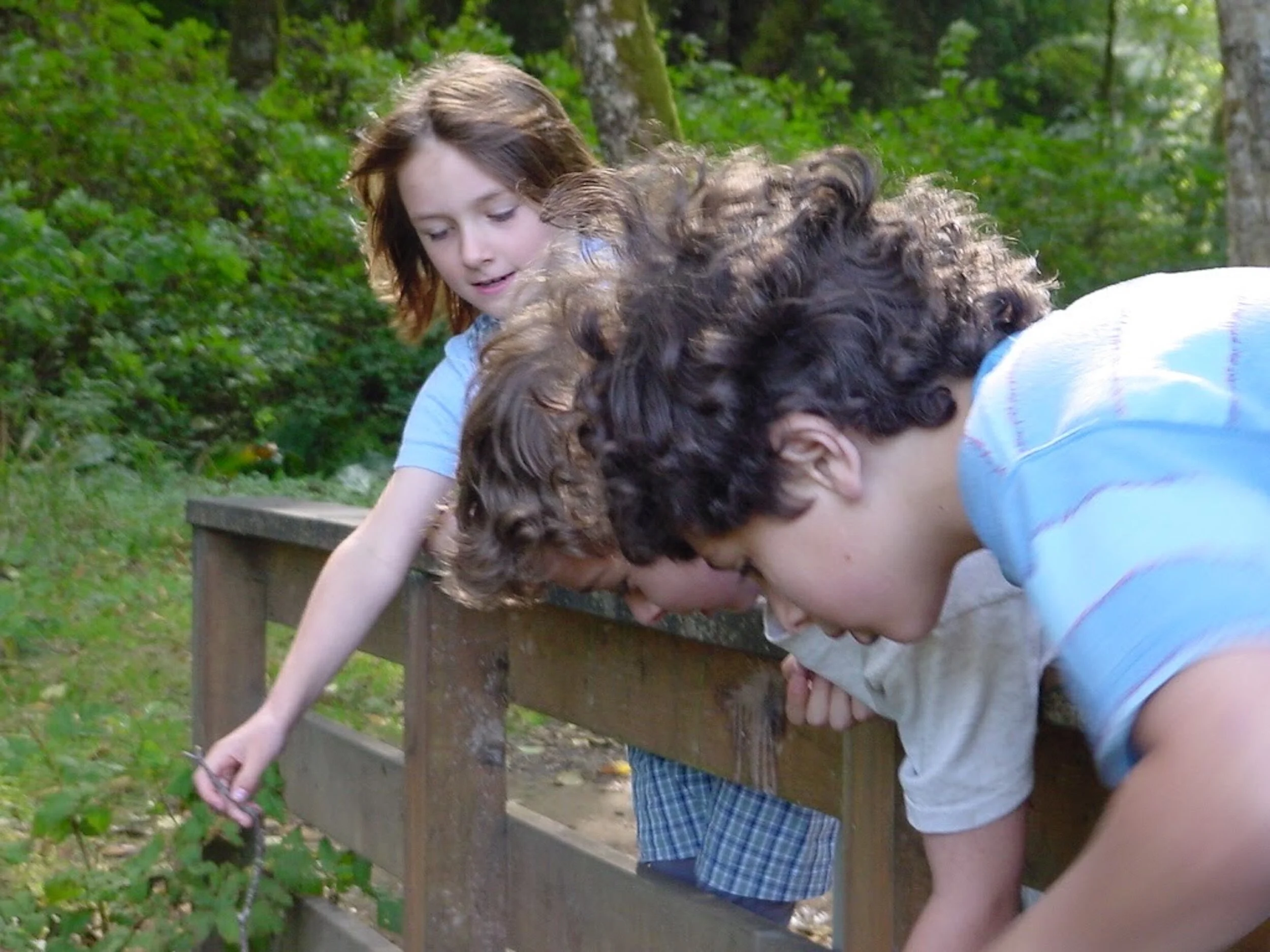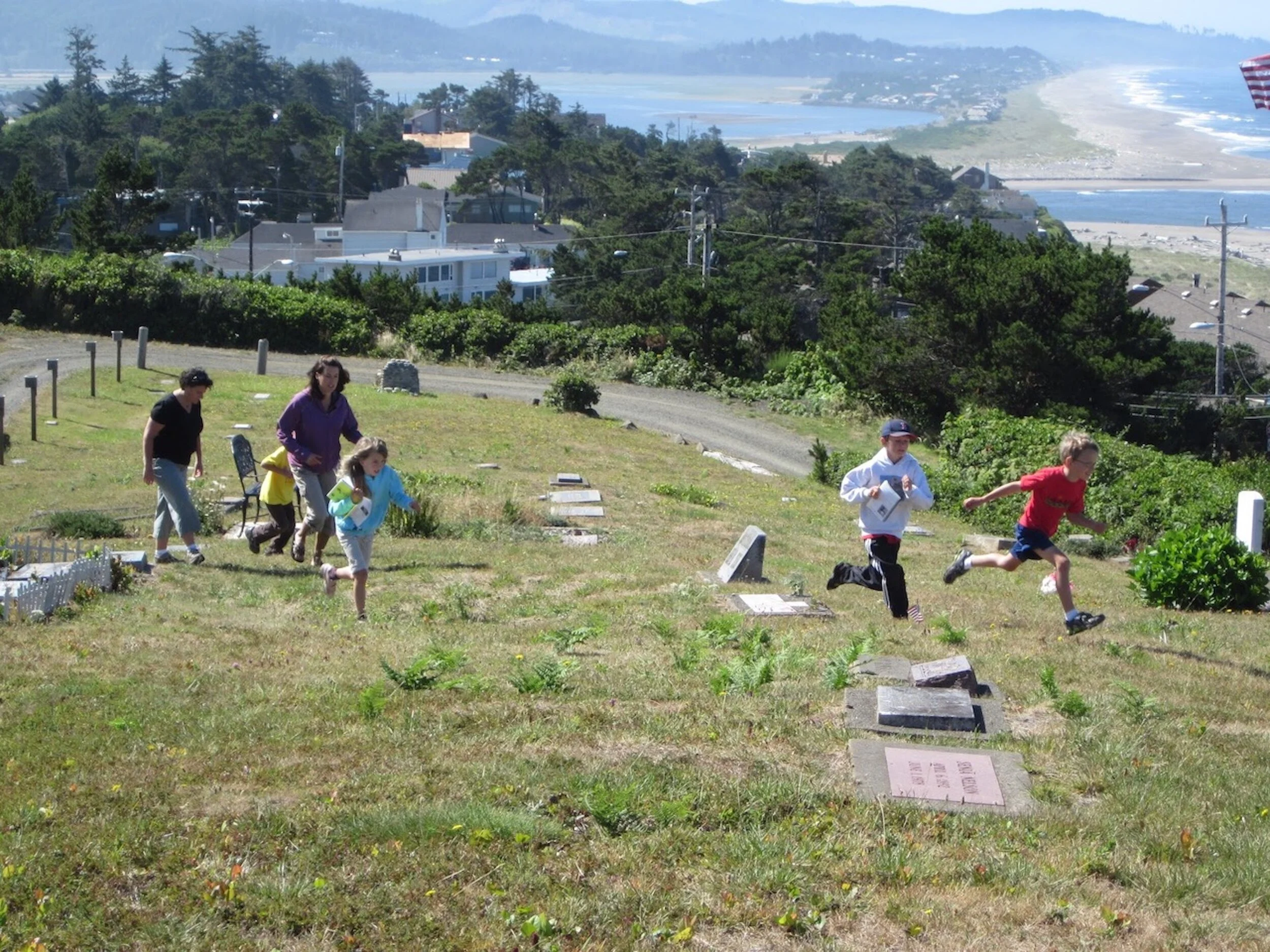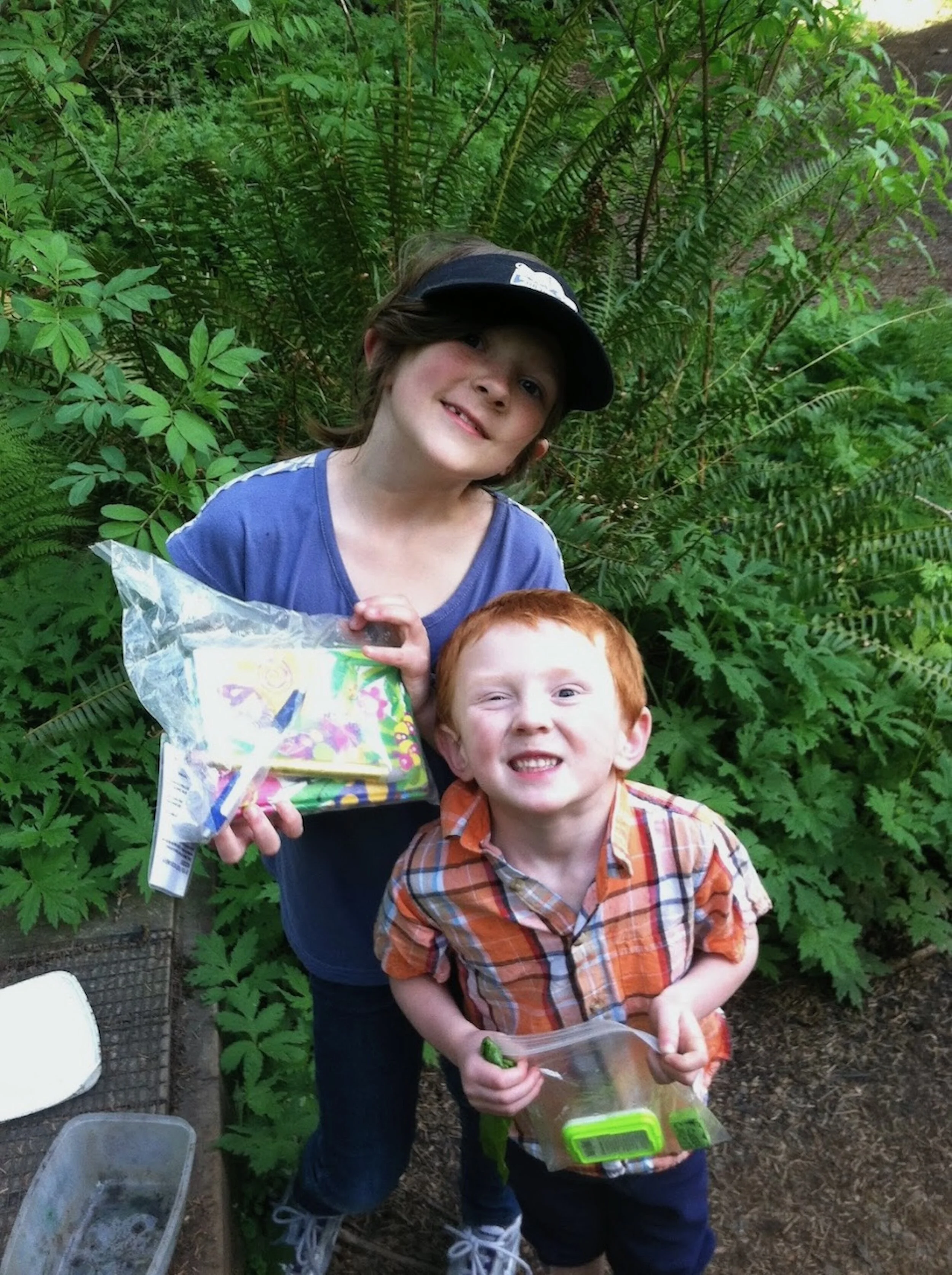Go Quest, young man
Get clued in to the coast’s treasure hunts hidden in plain sight
By Gretchen Ammerman
Oregon Coast TODAY
Roughly a decade ago, the publisher of this fine periodical, Patrick Alexander, his lovely wife, Krista, my husband Jesse and I set out on an adventure in the woods.
Patrick had chosen to write about a new outdoor activity called “Quests,” which are, to quote from the website: “Fun, free-choice learning adventures that use clues and hints to encourage participants to discover the natural, cultural and historical ‘treasures’ of place and community.”
Though Quests are made to be enjoyed by people of all ages, this particular one had a few tunnels and low crawls that were geared toward children. This was back when Assistant Publisher Quinn was but a gleam in his parents’ eye. Luckily, I can shop in the kids’ section in clothing stores, so I was sent to find the clues the more adult-sized members of my group couldn’t quite access. One instruction said to, “Send the most fern-sized member of your group,” to find the clue. I was sent, and to this day, “Little Fern,” is a nickname to which I still respond.
Fast forward to the present, and Quests have blossomed all along the Oregon Coast, thanks primarily to the efforts of Cait Goodwin, who set up the first local, low-tech hunts after relocating to Newport from Massachusetts in 2007. Her job title at the Hatfield Marine Science Center now includes Oregon Sea Grant Coast Quests Coordinator.
“The Oregon Coast was a new place for me,” she said. “Once I started exploring I was like, ‘Wow, there are so many treasures here to discover; this would be a great place for some Quests.’”
Modern Quests started out on the East Coast in the 1990s but are based on a much older practice called “Letterboxing,” which can be traced back to 19th Century England. Hikers on the moors began to leave a letter or postcard inside boxes along trails addressed to themselves or a friend or relative. The next person to discover the site would collect the postcards and post them.
The first letterboxes were so remote and well-hidden that only the most determined walkers would find them and weeks would pass before the letter made its way home.
The rainproof boxes used for Questing contain no letters, instead there is usually logbook in which you can leave a note, and a stamp pad and distinctive, sometimes hand-carved, stamp. You put the stamp into “The Oregon Coast Quests Book,” updated every two years and sold at many sites with nearby Quests. Collect 10 or more stamps to score a cute patch, which you can get through the mail or in person by special arrangement with Goodwin.
“I’m happy to meet people and personally hand them their patch,” she said. “That way, they can give me feedback, too. We retire some that didn’t work and start new ones based on suggestions. If people can’t find things they let me know and I jump into action.”
Diana Portwood is the “box monitor” for the Oceanlake Quest in Lincoln City, near Bob’s Beach Books, the business she runs and where Quest books are sold.
“We get mostly grandparents with grandkids but also some adult couples that come in to buy the book,” she said. “I was surprised at first to see a lot of people come in on rainy, windy days, but I guess it makes sense because you can still do this even when it’s too rough at the beach.”
A fan of the activities in the book, especially now when families are looking for safe outdoor fun and trying not to travel, Portwood said that even locals will enjoy them.
“I wish we’d had them when I was growing up here,” she said. “They have history that I had never learned before I did the local ones.”
Quests are found on every coastal county from Astoria to Port Orford, though are most dense on the Central Coast.
“It started in Lincoln County just because that’s where I live,” Goodwin said. “But they’ve been building as more people know about them. The Quests are always educational and done with the local naturalists and land owners who feel there is some value to be gained by having one there. Many are in state parks now because that is perfect for their goals of encouraging people to exercise outdoors while learning something about nature.”
I was surprised to find that some Quests take place in cemeteries, but Goodwin said those are not only popular ones, but are welcomed by the managers.
The first Quest I tried, using the 2019/2020 book, was in the Taft Pioneer Cemetery in Lincoln City. I’ve been there many times, but sure enough, following the clues to ultimately get my stamp showed me the place in a whole new light, exactly the goal Goodwin had when she designed it with help from students of Taft Elementary School.
“That Quest was really fun to make,” she said. “Even though it’s almost in the backyard of the school property, none of the kids involved had been there yet.”
As an experiment, Goodwin had the kids draw pictures of what they thought they were going to see when they arrived at the cemetery.
“All of their drawings had fantastical things in them like ghosts, bats, vampires, lightning bolts and headstones with RIP written on them,” she said. “One even a hand coming out of the ground like something from the Michael Jackson ‘Thriller’ video.”
After the group finished creating and writing up the clues for the Quest, Goodwin had them draw another picture.
“Not one of them put in any fantasy things that second time,” she said. “Instead, they drew trees, some of the art they saw on headstones and much more detail and reality. Basically, the Quest changed the way they reacted to the space.”
I asked Goodwin why following the clues had me backtracking and crisscrossing the area rather than being in a straightforward loop.
“Part of the goal of these is getting people to get outside for some exercise so if it’s a smaller place we mix it up,” she said. “We also design the clues so that you can’t just sit in the car and figure them out. We really want people to really enjoy the spaces where they are. Some of them end at a viewpoint, which is great because then you have the second part where you aren’t looking at a book the whole time.”
Tsunami evacuation routes toward higher ground are another place Goodwin and her partners in climb are creating Quests.
“The tsunami ones are also fun to create because they all have a different way of getting there, but all end at high ground,” Goodwin said. “It’s a great way to provide general education about what factors will create a tsunami and what to do if one is coming.”
Though she’d love it if Quest designing and maintenance was her full-time job, Goodwin also has other responsibilities, like conducting professional development and workshops for educators.
“It’s just one of the things I do but it’s definitely one of my favorites,” she said. “I like to say the program is small but mighty. It’s a great way to help people reach out and connect with an area with free choice, low-cost learning activities.”
Except for gas and park fees, the only expense related to Quests is the book, which is currently sold for $10.
“We sell the book for only enough that we can cover some of our costs,” Goodwin said. “They don’t just contain the routes, clues and stamp pages, they also have some history and include important information like driving directions and if you can bring your dog.”
Though similar to treasure hunting and geocaching, the real treasure with Questing is that you are hunting for information, not treasure, using fun clues instead of data points.
“I love the fact that each Quest has a unique flavor and that most are on trails,” Goodwin said. “With COVID-19 especially, these are a great way for parents and other family members to safely help the kids get some of their wiggles out.”
For more information, including places to buy the Quests book, go to seagrant.oregonstate.edu/Quests.



